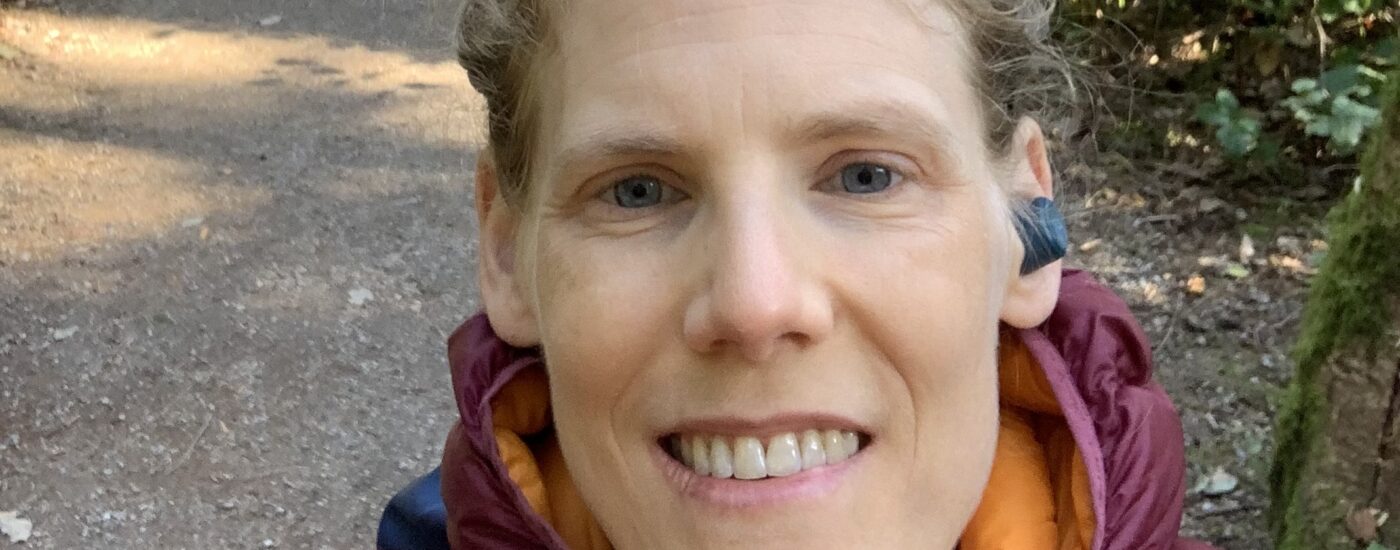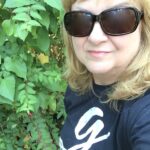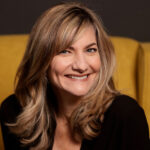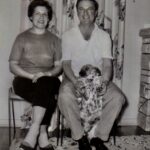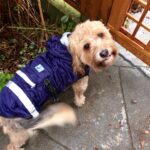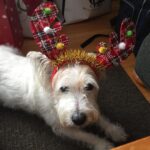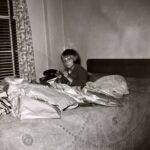Today we raise our fists high and put our hands together in celebration of our Feature Girl Warrior, the artist, creator and visionary, Nicole Cherry. Raised in a large close-knit loving family in Prince George, BC, Nicole has fond memories of an idyllic childhood spent ice fishing with her Grandpa and Dad, sledding on crazy carpets, and baking and canning with her Grandmas. She loved sports and was very active in track & field, basketball and baseball, soccer, skiing and snowboarding. Since early grade school she also loved art and the human body. Medicine fascinated her and art allowed her to express her emotions and thoughts without words. These two practices created her yin-yang. Throughout her happy and active childhood Nicole had been experiencing chronic pain in her feet and stomach. She had learned to live with these ailments and continued to play sports, and eventually moved to Victoria to study Visual Arts at the University of Victoria. It was in the winter of 2007, while training for a BMO marathon, that she developed a femoral neck stress fracture, and a bone density scan confirmed she had osteoporosis. Nicole persevered despite the pain and graduated from the University of Victoria with a BFA in the spring of 2009, returning in the fall to complete her 2-year pre-med studies. But her life took another turn and Nicole learned firsthand that even our best-laid plans can be disrupted by unpredictable events and circumstances. Due to mounting critical health issues — that she could no longer ignore or apply mind-over-matter tactics to subdue — she made the difficult decision not to attend medical school and changed career paths. For over the past ten years, Nicole has been working as a Business Development Analyst. At the firm where she works, Nicole has created reports, built data models and has helped the data to tell a story of its own. Nicole found enjoyment in this work, mainly due to the wonderful people she had worked with over the years. All the while, her yin-yang had been subconsciously speaking to her and she knew she had to reconnect with her integrity, truth, and “what makes me feel like me,” Nicole asserts. Since 2010 until present, Nicole has been working on a collection of breathtaking and exquisite artwork. A large portion of her more current work is in the medium Prisma Pencil Crayon on Arches Watercolor Paper, as well as, her other favorite medium, oil on canvas, creating small and large scale paintings. And through the help of her friend Dr. Stu Gershman, Nicole is learning to change her responses to pain and has found a way to live life in a more mindful and peaceful way. Nicole says that when anxious or fearful thoughts get loud she grounds her feet, breathes, and reminds herself of all the progress she’s made and the good things she has in life. She goes for a walk with her dog, does a somatic practice or meditation and comforts her fear, giving it space to breathe. And to that we say YES!
What makes you a Girl Warrior?
I guess I’d have to quote my cousin Josh who said, “Nik never stood a chance growing up with all these boys.” I was the first girl born in our family in over 20 years. I have two older brothers, five older male cousins, one the same age and one younger, and it wasn’t until six years after I was born that my little cousin Jenna joined me as the only two girls. I will never give up. It’s been my mantra my entire life — no matter what obstacle is put in front of me. I have a tattoo of the Chinese Kanji that says ‘never give up’ that I got when I was 18 years old. I understand that life is not easy and that challenges will happen but you need to look at it not as an obstacle and hardship but as an opportunity and a way to grow and find a lesson from it.
What’s your fondest memory of growing up in Prince George?
In Prince George I was blessed to have all of my family — aunts, uncles, both sets of grandparents, and cousins — except for my one aunt and uncle who lived in Vancouver — all within a 5 kilometer radius within our College Heights neighborhood. Growing up I built snow castles, went tobogganing and sledding right across the street. I got to go BMXing and biking all summer, build tree forts with my brothers and cousins and friends. We spent weekends with aunts, uncles and grandparents playing cards, dancing to music, and going to the lake. I just had a really great childhood in nature and with my entire family. We didn’t need a special occasion to see them, instead it was just part of everyday life, stopping by my Gramma’s house on the way home from school or popping over to my aunt’s house or spending a weekend night with my grandparents.
Who were your early influencers?
I didn’t really have one particular early influencer because I had so much family around me that I drew influences from each of them. My grandparents, on both sides of the family, played a huge role in my life and provided me with values, strength, determination — learning about their lives growing up and the hardships they overcame made me understand the value of work, determination, family, and what values are important. My brother Kyle, who is 21 months older than me, was a big influencer. We were very close growing up and I always wanted to do what he did and hang out with him. I admired his free-style energy — never worrying about what others thought, willing to go out and try anything, fail or succeed, and when Kyle switched from skiing to snowboarding, the first thing I wanted to do was switch to snowboarding too!
In addition to art, playing sports has been a big part of your life. What happened in the winter of 2007 that changed the trajectory of your athletic pursuits?
I started playing sports at a very young age but overtime, with my health, I had to give up competing and doing a lot of them. In 2007, during training for the Vancouver BMO Marathon in Victoria, I got a stress fracture in my femoral neck. Further investigation into why it happened, despite all my weight training over the years and weight bearing activities, I had osteoporosis. Over the following 2 years I had to decrease my running, no longer able to race or do leisure runs twice a week, because more fractures continued to happen in my sacrum and femurs. I had to give up playing any recreation sports — like soccer once a week. Eventually by 2009, I had to completely give up running and other impact activities, which was very difficult for me to do.
What happened on the Burrard Street bridge in January 2021?
I had reached one of my lowest points. During the latest injury in August 2020, with multiple compression fractures and a rib fracture occurring simultaneously in my spine, not being able to walk, being hospitalized, then eventually walking but not being able to control any of the pain while it continued to worsen, I lost any hope. I started having suicidal thoughts for the first time in my long battle with my chronic illness. I thought, after all the years of what I had been through, that this is it, this will do me in, and take away my hope. I thought, ‘what if I just jumped off; I wouldn’t have to be in this horrible pain all day. How can I live a life like this where I can’t do anything, I can’t care for myself, I can’t care for my dog, I can barely walk and all day I’m in extreme back spasms and agony? Life before was a prison with my health and now it’s even worse.’ These thoughts were running non-stop through my head as I walked. But the thing that stopped me was thinking of my family. I knew that there’s no way I could put them through that, despite it putting an end to my pain. It would cause everlasting pain for them and I could never do that; I would rather be tortured then do something like that to them so I kept walking back home and continued into a deep dark state of helplessness and hopelessness. A very special friend Stu, who could sense my trouble and see the pattern that was happening over the months to my mental state, and who also understands complex pain, intervened and reached out. Without him, I wouldn’t have had the opportunity to take a path towards pain education that gave me the tools to use my brain to help me move forward and find hope again. I am forever grateful.
Give us the CliffsNotes on a type of pain called Central Sensitization CNS, and how discovering it started you on the road to real recovery?
Without getting into all the science terminology and over-detailed, Central Sensitization is a condition of the nervous system, where the nervous system persists in a state of high reactivity, with heightened sensitivity to pain and the sensation of touch. A person will experience pain with something not normally painful, like a light massage or touch, but the pain is 100% real and felt. The nerves in the skin, experiencing the pressure from the touch, send signals to the brain, which doesn’t interpret it as a light touch, because the nervous system is in a heightened state, and instead senses it much more intensely, so the result is pain. Pain is actually interpreted in the brain, and is how we experience it, versus the common belief that pain is the result of tissue damage. You can have pain and no tissue damage and you can have damage and no pain. The cause of CNS involves specific changes to the nervous system, common types of chronic pain disorders, like headaches, chronic back pain, or limb pain are injuries or conditions to the peripheral nervous system – that part of the nervous system that lies outside the spinal cord and brain. Many factors go into CNS — predisposing ones, factors following onset of pain after injury.
How do art and medicine create your yin-yang?
It may sound cliché but I have been interested in medicine and becoming a doctor since I was very young. When I was seven and eight I would watch the real-life surgeries on TV and be amazed. The blood and real imagery didn’t bother me, and if somebody broke a bone or cut themselves, I always wanted to see what it looked like. I always liked helping people and solving puzzles, understanding all of the intricate details of something. I never wanted the CliffsNotes and always wanted to know all of the foundation stuff that made up something. The way I learned was by breaking something down into its smallest part and then putting all the pieces together to understand the whole picture. I was really interested in internal medicine and being a GP because I wanted to be able to have a relationship with my patients and I also wanted to be able to bring together multiple areas and pieces to put their puzzle together. My mind is one that really needs to be stimulated and challenged constantly; I get bored doing the same thing. Medicine and the human body and health is something that is constantly changing and evolving so you never stop learning. I need that in order to feel happy and fulfilled but I am also very expressive with my art. Because I didn’t express my emotions well growing up (I’ve found tools in the last couple years to now do this), and I’m an introvert, art was a way for me to always get out my feelings and cope with my pain or limitations — any insecurities — in a way that was visual. The image might provoke feelings and emotions in others, but also depicts a story that can be interpreted differently by each person who views it. In this way, I’m never really revealing what I am feeling. Doing it with pictures or images makes me vulnerable, but less vulnerable than talking about how I feel or what I’m going through. Art gets the chatter out of my head and helps me find balance and clarity. When I spend all of my time focused on science and there’s no time for creating art, I feel unfulfilled and stuck in the chatter in my head. And vice versa, if all I do is art I start to become bored and unfulfilled if I’m not learning, asking questions and engaging in other things to stimulate my mind.
What do we need to know “for sure” about living with a chronic illness?
For me, and I can’t speak for other people who have chronic illnesses, every day is work — from getting up to when I go to sleep. But that doesn’t mean I want pity or to be recognized for it and be praised etc., it’s just that it takes a lot of work and a lot of time to do things that others can just whip through or don’t have to do, like exercises and stretches first thing, to be able to start moving enough to shower and get anything else accomplished. We put on a happy face sometimes when really we just need to scream and yell or curse and just let out some frustration and let those emotions metabolize without fear of being judged that we are depressed or angry all the time. What we really need is to have someone there to listen, not try to fix it or search for an answer, not comment — just listen and let us vent, just allow us to be human. By doing that, by listening and not judging and letting the person know you’re there for them as a sounding board, is extremely important as it allows a person to not feel so alone, and it’s very therapeutic. So many times over the years I have had my ‘sit in the car screaming at the top of my lungs’ five-minute sessions that keeps me from going into dark and angry places. And that’s really important!
What’s the most important life lesson your Mom taught you?
My mom taught me, not so much with words, but just by her life that despite your age and your gender you can really do anything at any age, if you’re willing to work hard enough. My mom knows how to have fun — dance, laugh, throw the most amazing parties and bring everyone together. She took care of the house, cooking, cleaning, etc., for me, my two brothers and my dad while doing a bookkeeping job before being a partner within my dad’s business. In her late 40s she became a Financial Manager at a company for 13 years, recreated her entire career, grew even more independent, found her voice in front of board members, led a team, and stepped out of her comfort zone. I’m just always so proud of her. The lesson that I’ve learned from watching her throughout my life is that you are not defined by one thing, one moment in time, and that you can always change. She showed me that you can be a housewife, a business owner, the life of a party, a planner, down-to-earth, loving and caring and sacrificing, no matter what your age, gender, or your status.
What would you say to your younger Girl Warrior?
Life is beautiful and hard. Things will happen as part of its natural progression. Your feelings and emotions are normal and they need to be expressed, not suppressed, so don’t fear them or feel shameful. You are not alone, everyone has these feelings, thoughts, and insecurities; it’s part of human nature. Know that you are enough and always will be. Have compassion for yourself and for all those you see because we never know what else is happening in their lives or what brought them to where they are in that moment of their life. When you are faced with a challenge look at it as an opportunity not an obstacle. Most importantly, have fun and breath and be present, life is not a race, enjoy each part of your life, especially being a kid, for getting older is not better, and don’t plan years ahead or worry about hitting milestones. Success in life is enjoying the simplest things, finding your purpose; how you get there will unfold organically not through force.
What would you say to future Girl Warriors looking for inspiration?
To just be authentic, be true to yourself, not to what society has tried to label or set for people. Understand that life really is a journey and it’s going to take many twists and turns and there is always something good that comes out of the struggles. It makes you stronger; it makes you see that you can handle more than you thought you could and it prepares you for the next hurdle. When you are in the trenches and feel you can’t do more, think about a previous time you thought that and how you were able to overcome it; use that motivation to persevere. Most importantly, don’t let others weigh you down and don’t let their issues become your issue.
Who is/are your Girl Warrior hero(s) and why?
My oldest girlfriend Loren because we have been friends since grade two and together through everything you can think of. She is an amazing Mom to two kids and I am in awe of what she does. My one and only 5-year-old niece Finley – she has so much pizazz. She is tougher than her 7-year-old brother, has character, sass, and fearlessness. She is just amazing! My two grandmas, who have passed, who had difficult childhoods; they are true warriors to have survived it. They may be passed but I think of their strength all the time.
What books are on your nightstand?
I’m in the middle of reading two books right now, “Fiber Fuel”by Dr. Will Bulsiewicz and “The Microbiome Solution” by Dr. Robynne Chutkan. I have to start “Proof is in the Plants” by Simon Hill. I have read “The Bhagavad Gita” by Eknath Easwaran many times and constantly read its lessons so it’s always out. I have a Microbiology text waiting to start and just finished “The Wrong End of the Table, a mostly comic memoir of a Muslim Arab American women just trying to fit in” by Ayser Salman. I love to read and do it instead of watching TV or using screens. Books of fiction, non-fiction, and human biology and science and our environment.
Living or dead, who would you like to have lunch with?
He is alive and well, Jay Shetty, who is actually a couple years younger than me and has a podcast called On Purpose. I first learned about him in February 2020 when I downloaded his Audiobook Think Like a Monk. His story, about becoming a Monk for three years and leaving college, society norms to serve, and then leaving the monastery to continue to serve and teach the wisdom he learned, was moving. His podcast is amazing, he has such a beautiful spirit and feels so genuine and authentic. I would love to sit down and have a podcast session with him. His lessons transformed me from 2020 onward. I have listened to his book three times and will listen again. Maybe we will meet!
Describe yourself in five words.
Artistic, introvert, persevering, altruistic, studiousness/inquisitive.
If a bioflic were written about your life, what would it be called?
A purposely painful life, using obstacles as opportunities.
To learn more about Nicole and to see her artwork head over to her website: https://www.prismaticartwork.com/
Follow her on Instagram @nicoleandsadiecherry
To enjoy Nicole’s art on Instagram follow her @prismaticartbynicolecherry


